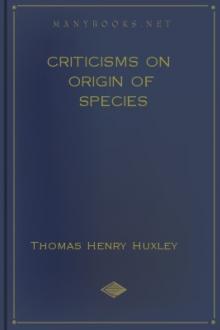Kudzu Review Summer Solstice 2012 Edition by Madison Percy Jones IV (Editor), Arthur Wilke (Editor), Robin Ward (Editor) (easy to read books for adults list TXT) 📖

Book online «Kudzu Review Summer Solstice 2012 Edition by Madison Percy Jones IV (Editor), Arthur Wilke (Editor), Robin Ward (Editor) (easy to read books for adults list TXT) 📖». Author Madison Percy Jones IV (Editor), Arthur Wilke (Editor), Robin Ward (Editor)
On we went, until we had completed a full circle, and our guide thanked us for coming. Among the facts the ebullient tour guide didn’t share was that the experiment currently underway, a severely down-sized version of the first (the African bush babies weren’t invited back), had been marred by infighting among the partners—on April Fool’s Day federal marshals had escorted the serving management team off-site so a Beverly Hills based financial group could take over. Idealism and even separation of the spheres all fell away (at one point, clandestinely, a door had been opened from the outside). These problems were rooted, not surprisingly, in financial particulars.
On September 6th, exactly 40 days after my visit, the experiment was abruptly terminated and the site sold, then sold again, then sold again. “We replicate the outside world. . . .”
II: January, 2012
For years I was almost entirely satisfied with this story of my visit to Biosphere 2. It has a nice sense of closure to it; a few amusing coincidences; subtle lessons in class and intellectual division; a “plague on both your houses” aspect meant to prompt readers to compare the fates of Casa Grande and Biosphere 2; it allows me to name drop several of my favorite authors; and has a kind of poetic algebra that demonstrates, in a pleasingly indirect way, the absurdity of overactive, tunnel-vision science, and of the helplessness of those looking into nature before the tooth-and-claw of the monied.
I had been almost entirely satisfied. . . . What came back to me again and again are those post-Hiroshima garden gnomes, the nuclear hardware kachinas. They were of course tangential to the Biosphere 2 experiments, amusing tchotchkes and nothing more. But someone had to think of the idea, had to have had some reason for choosing to bind these forms with these materials, and everyone who participated in the experiments, every scientist and administrator, every technician, at some point had to have passed them—but did they understand what they were seeing? Understood, that is, how the spirits of everything that made up the lives of the Pueblo people in the area, every emotion, every element in their environment, were here reincarnated as pieces of discarded nuclear hardware. Aside from the directly spiritual dimension, there is the fact that uranium mines in the Southwest, primarily in Colorado, New Mexico and on Navajo lands in northern Arizona, have dumped hundreds of tons of radioactive tailings on the land; there have been accidents and surface water contaminations; it remains a sensitive environmental subject to this day. From the moment I first saw them these kachinas have seemed to me to be startlingly wrong-headed on several levels.
Being located in central Arizona, Biosphere 2 certainly had visitors from the Pueblo peoples. Perhaps those who have a spiritual relationship with traditional kachinas saw these tiny metal men and shrugged them off; even found them amusing. I am not making any paternalist claim to the right to be outraged at some desecration on their behalf. But every time I have thought about the kachinas over the past 18 years, I have felt that they, more clearly than anything else I’d seen at Biosphere 2, were trying to tell me something. It wasn’t until a recent rereading of Belgian philosopher Isabelle Stengers’ “Beyond Conversation: The Risks of Peace” that I was finally able to hear what the kachinas had been trying to tell me.
Stengers points out that since Galileo, the “dark greatness” of science has come from its refusal to accept any peaceful, negotiated coexistence with anything it feels it has supplanted. Those whose lives are intertwined with the scientific method are subject to, “The seduction of the idea of a truth that should hurt and disenchant, which should go beyond illusions and destroy them. . . .”[i] For science this is what “truth” does: a scientific truth is by its nature meant to expel—expel philosophy, opinion, superstition, magic and myth, anything “other”—that might be holding a place where a scientific truth should go. It is through this belief that first someone, then everyone, could accept the nuclear spirit figures. This is what the kachinas were trying to tell me: the creators and crew of Biosphere 2 would have been betraying their scientific mission had they taken into account the “myths” that (formerly) resided in the kachinas form.
One of this belief system’s corollaries—that the only admissible role for the non-human is to serve the human-directed role of being reliable witnesses to “objective” interpretations—explains why the bush babies weren’t invited back.
Stengers suggests that this scientific model be replaced by one she has named “cosmopolitics.” The first two syllables reflect her answer to one of science’s haughtiest questions: “Who is entitled to speak and on what grounds when the question of our common destiny is at stake?” Stengers believes “the word common should not be restricted to our fellow humans . . . but should entertain the problematic togetherness” of all “shapes of value” that comprise our realities, “including beings as disparate as ‘neutrinos’ (a part of the physicist’s reality) and ancestors (a part of reality for those whose traditions have taught them to communicate with the dead).” [ii] For Stengers, entitling all these voices—those of the subatomic, of the dead, of bush babies and more—would create
an ecological production of actual togetherness, where “ecological” means that the aim is not toward a unity beyond differences . . . but toward a creation of concrete, interlocked, asymmetrical, and always partial graspings.[iii]
As an exercise in the scientific method, an ideal of either/or, Biosphere could not accept a unity beyond differences. Its belief in the idea that “scientific success” means “to stop interpretation, to have ambitions bowing in front of an objective verdict, to promote reality against intentions, and to enforce the closure of until then free human controversies”[iv] doomed it. Because science’s own “dark greatness” explains how the Beverly Hills financiers, who could have benefited from cooperation with the original staff, came to destroy the project. Economics is, after all, a science, and as such could not be expected to allow the myth of “pure research” to remain, to take up the belief space where economic facts should rightly be.
III: May, 1943
For a full day, I was almost entirely satisfied with the partial graspings of this explanation, in large part because some of the ideas Stengers develops in her essay originate in the work of A. N. Whitehead’s “process philosophy,” a theory with which I agree. This underappreciated philosophy holds that “being” or “existence” is always a matter of the processes at work. The processes that go to make up something are what create its reality; what a thing is is what it does. These processes can be very abstract, or as physical as atoms in open air creating the process of a windstorm. If the relevant processes aren’t present, nothing can exist. With this freshly in mind, one day after I wrote the second note above, I turned to another thinker in the process philosophy line, Adelbert Ames, Jr.[v] While Ames died more than 35 years before Biosphere 2 (allegedly) opened, his work offers me an important perspective, one that shapes this final note—on the very existence of the facility.
From 1941 through his death in 1955 Ames wrote “Morning Notes” to himself. Here is a note from May of 1943:
It is only through relative motion between the organism and the other events that their spatial relationship to the organism could be disclosed. Movement, relative change, and therefore time necessary for it are conditions for the disclosure of relative spatial relationships . . . and the action must be purposeful to provide a basis for meaning and significance.
That purposeful change, action, is a condition for the existence of space is very interesting.[vi]
The implications of Ames’ note seem to me to be as follows: Because the scientists’ at Biosphere 2 only concerned themselves with the maintenance of a sealed-off physical stasis, rather than with what we (meaning those of us who find ourselves in sympathy with Stegners’ “cosmopolitics,” those of us who try to be “ecological” beings, and care about the voices of, for example, African bush babies, or subatomic particles—some of which wink in and out of existence as we observe them, something which also be said of our dead ancestors) might view as the complex of processes that constitute and carry true truths and values, then there was no purposeful change at Biosphere 2. This is true even by way of simple definition: stasis = no change. Per Ames, without purposeful change there is no “relative spatial relationship” between our environment and us. So the unavoidable conclusion, the only true—which is to say value-containing—conclusion I can come to is, as there was no spatial relationship created, nor any space of “meaning and significance” at the site, Biosphere 2 never truly existed. My Arizona trip took place in a more ecologically valuable landscape than I had (briefly, erroneously) believed.
This, finally, is the version of the story of my visit which I find entirely satisfactory.
[i] Isabelle Stengers, “Beyond Conversation: The Risks of Peace,” in Process and Difference (ed. Keller and Daniell) (Albany: SUNY Press, 2002), 244-245
[ii] Stengers, 248.
[iii] Stengers, 248–249.
[iv] Stengers, 251.
[v] Ames’ primary field was the psychology of visual perception, by way of which he made significant contributions to the physical demonstration of process philosophy. Whitehead called him “a genius.” See my biography, Adelbert Ames, Jr.: A Life of Vision and Becomingness (Bamberger Books, 2006).
[vi] Adelbert Ames, Jr. The Morning Notes of Adelbert Ames, Jr. (ed. Hadley Cantril) (New Brunswick: Rutgers University, 1960), 6.
In the hum
before everything changed
fern drenched the sky
sunlight spidered rock
on lazy afternoons
as tuatara left their ancient skins
beneath the eyes of the forest
When did the green begin to choke
the old growth pine entangle
and broken birds unwhistle the air
Now rain drums the wood red
and the carved face of the hills
spits borrowed bones
Kia ora.
Memory persists
to endanger the past





Comments (0)